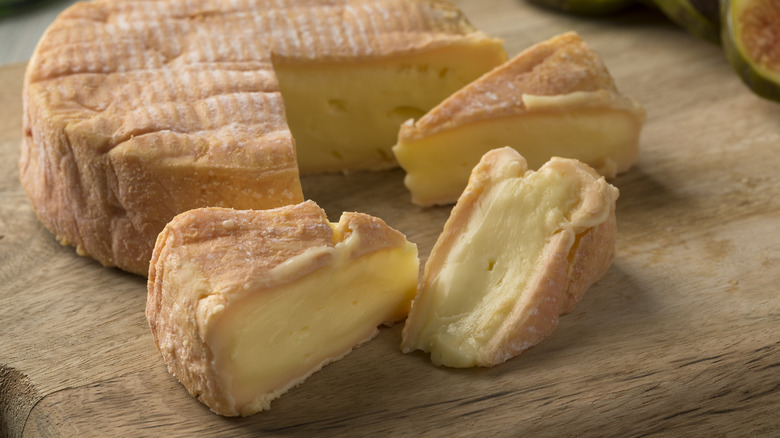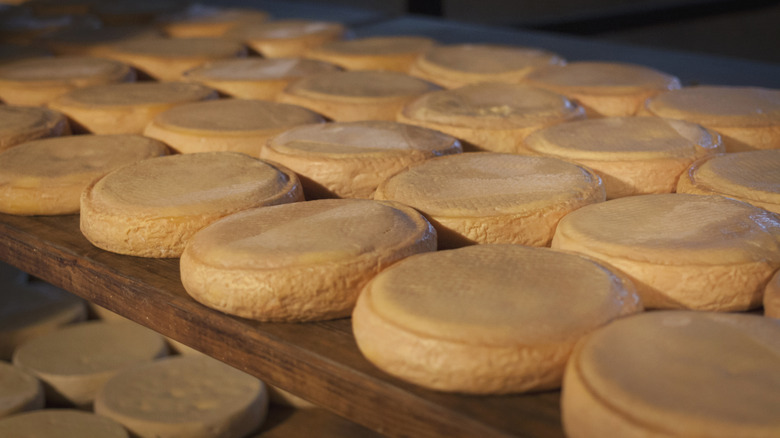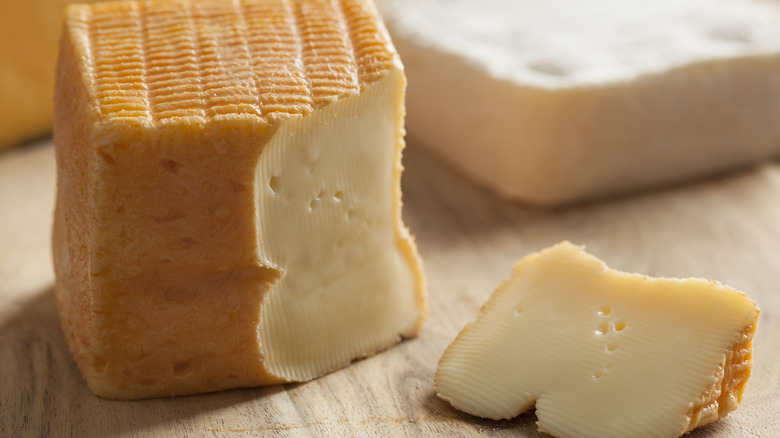You Can Thank A Group Of Monks For The Classic Stinky Cheeses We Have Today
When we think of the most wonderful smells in the foodie world, we usually come up with things like the wafting aroma of chocolate chip cookies or maybe some apple cider BBQ ribs. Stinky cheese? Not so much. Still, it's a strange gastronomic marvel that some of the cheeses that smell the worst might just taste the best. They're often described as being mild in flavor and having a soft, creamy texture unparalleled in the cheese world. There's some interesting science at work here, and according to the oft-told story, the practice of washing the rinds of cheese to create this smelly subcategory goes back to that point in time where legend and history often seem to coexist.
We're talking about the 7th century when the story says a young monk living in a monastery in France became the first to stumble on this way of preserving cheese and turning it into something divine. And it makes sense, as medieval monks have been credited with creating a variety of cheeses. Grana Padano — similar to parmesan — was first made by 12th-century Benedictine monks. Epoisses was created in a monastery of the same name. And speaking of stinky cheeses, what about Limburger? That's a relative newcomer developed by Belgian Trappists in the 19th century. But let's take a look at an early cheesy origin story.
The first washed-rind cheeses were created accidentally
First, here's a crash course in cheese-making. Most of the world's stinkiest cheeses are what's called washed-rind cheese, and that's exactly what it sounds like. After cheeses are molded, they're washed with a liquid solution. How often and with what varies, but it's usually a process that's repeated a few times, and often it involves some kind of brine or alcohol. Sometimes, this process is also called smear-ripening, and the first record of it being done dates back to the 7th century.
Here's the basics: A Benedictine monk was tending the cheeses that were maturing in a monastery in Alsace-Lorraine when he noticed there was some questionable, mold-like growth. He took a bucket filled with whatever sanitizing liquid he had been using for his other cleaning duties and cleaned off the cheese. The mold kept coming back, so he kept scrubbing it, and he ended up with a strange sight: The cheese had a dark, orange-red coating.
It smelled awful, and today, we may have thrown it away. In the Middle Ages, though, leftovers were often repurposed, and food waste was carefully kept to a minimum. So, they ate the cheese and realized they had discovered a delicious new way of making it. (Pro tip: As a general rule, do not eat your moldy leftovers.)
There's some fascinating science happening on washed-rind cheeses
Fans of the gooiest cheeses know that it's all about the washed rind, and medieval monks knew it, too. (Here's a fun fact: 14th-century records from England's Winchester Cathedral Priory indicate that a single monk would eat an average of about half a pound of cheese every week.) Today, washed-rind cheeses come in both soft and hard varieties, and their flavor profile depends on what is used to wash them during their aging process. The science is generally the same, though, and it's neat stuff.
Most of the substances that have historically been used to wash these cheese rinds are those that are also produced in large quantities by monasteries. We're talking about beer, wine, and other types of alcohol, which were initially used to stop the development of mold. (This was, after all, way before refrigeration.) The alcohol kept the mold at bay but also caused the growth of colonies of bacteria.
The most common kind of bacteria that grows on washed-rind cheeses is called brevibacterium linens (although it's not the only one), and today, it's sometimes introduced on purpose in a solution of brine and bacteria. What you're seeing in that unique color is the colonies of bacteria, and if you're looking at experimenting with washed-rind cheeses, here's a good rule of thumb: If they're covered in white, they're usually not as overwhelmingly pungent as other types, and are a great place to start.


